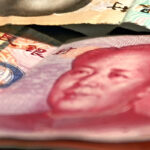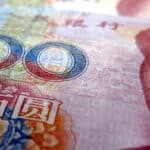by Luca Ruggeri
Africa has become one of the battlegrounds of the clash between the three major world powers (the US, China and Russia), where, moreover, France is also trying to maintain an, increasingly battered, presence.
China and Russia in recent years have significantly expanded their presence on the African continent but using very different means. While Russia has sought to take advantage of its own casual use of force, especially with the use of contractors from the private company Wagner, China has preferred to choose the financial option.
In a previous article we had given an account of the considerable scale of Chinese financing to third world countries and its characteristics. In fact, an academic study, based on a sound data-base, pointed out that bilateral contracts, between Chinese entities and developing countries, are characterized by very opaque clauses that ensure that Chinese creditors have an advantageous position over other creditors and rights vis-à-vis debtors that sometimes have little to do with financial aspects alone, to the point that some commentators express themselves in terms of a "debt trap" to the detriment of debtor countries. A consideration now widely accepted by the U.S. leadership to the extent that it was used, with reference to Chinese activity, even by the Secretary of State, Janet Yellen, before the House of Representatives last March.
Leaving aside the blatant expansionist purpose of such operations, one could not help but wonder what the Chinese behavior would be in the face of the debtors' difficulties, also in view of the inevitability of such a situation, given the large amounts of the interventions and the fragilities of the economies involved (a case in point: Montenegro and the highway built with Chinese financing for an amount impossible to repay given the size of the Montenegrin economy).
A very recent study titled China as an International Lender of Last Resort produced by four authors (S. Horn - World Bank, B. C. Parks - AidData, C. M. Reinhart - Harvard Kennedy School and C. Trebesch - Kiel Institute for the World Economy) provides a clear representation of Chinese interventions in the face of its debtors' crises, with timely estimates about the size of the phenomenon.
This study estimates $240 billion in Chinese interventions in support of 22 troubled states over the period 2000-2021, with a sharp acceleration in the years 2016-2021, covering $185 billion of the total as Chinese credits to developing countries grow.
The findings highlight the fact that China has taken on the role of lender of last resort vis-à-vis a core group of countries, thus in effect creating its own financial system that competes with the activity hitherto carried out essentially by the U.S. and the International Monetary Fund. Even though the numbers expressed by China in this area cannot compete with those of the U.S. and IMF, it should be noted that the current international set-up is a formalization of the support activities carried out by the U.S. in the 1930s and after World War II, thus casting doubt on whether China intends to pursue the same path in institutionalizing its own operations.
Many insights and reflections can be extracted from the study; who is writing submits some points to you:
- the states considered in the study are 22 and their list well represents Chinese political interests, certainly including developing states but also middle-income states; in fact, the largest beneficiaries of Chinese interventions considered in the study are Argentina, Mongolia and Pakistan;
- the characteristics of the transactions are a lack of transparency in the bilateral agreements, in line, moreover, with Chinese financing arrangements, and a cost, for the borrower, higher than similar transactions carried out by other parties;
- the extensive use of swap lines granted by the Chinese central bank are touted as an expression of the growth of the Chinese currency in the international economy but, in fact, closely linked to the plight of the other country party to the agreement. Such lines have the advantage of not appearing as debt, they increase the central bank's gross reserves thus providing a much more positive image of its ability to meet foreign currency debt (for clarification contact the Turkish central bank, to which the study attributes, in June 2021, the use of a swap line for $5.5 billion). A further aspect that makes this mode of support attractive is the fact that the uses of lines between central banks are generally not made public, thus contributing to the lack of transparency that characterizes Chinese modes of operation;
While Africa constitutes one of the continents that have seen the greatest Chinese financial activism, in the ways depicted above, and is the battleground between the U.S., China and Russia, the study described is an interesting source of information and reveals the strengths but also the limitations of Chinese intervention in some countries.
Senior Fellow at the Centro Studi Machiavelli. A graduate in Economics, he worked for over twenty years at a large Italian bank and currently serves as a general manager at an institutional investor.









Scrivi un commento